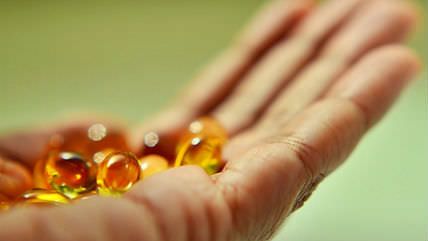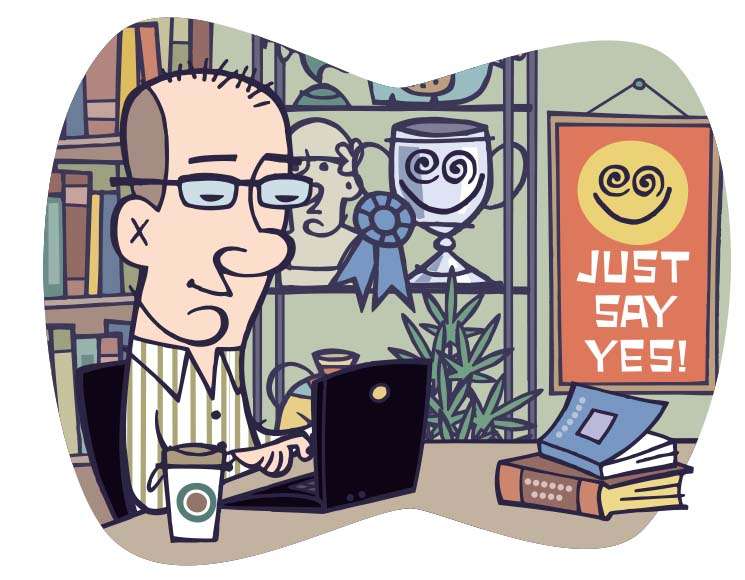The DIY Drug Prize
The federal government should offer prize money for the creation of a safer, better high.

"Dream with me for a moment," psychopharmacologist Ronald K. Siegel wrote in his 1989 magnum opus, Intoxication. "What would be wrong if we had perfectly safe intoxicants?" In Siegel's estimation, the desire to alter one's consciousness is a "fourth drive," a "natural part of our biology" that influences human behavior as much as hunger, thirst, and sex.
And if we can't suppress our desire to get high any more effectively than we can suppress our desire for breakfast, the University of California, Los Angeles, researcher reasoned, we should be trying to develop the safest intoxicants possible. A "perfumed mist that is as enjoyable as marijuana or tobacco but as harmless as clean air" is one variant Siegel imagined. A mood enhancer that is "more appealing than cocaine and less harmful than caffeine" is another.
Pipe dream? Certainly innovation has never been a part of the federal government's drug policy mandate. In 1986, in response to "designer drugs" intended to mimic the effects of heroin and other illegal drugs, Congress passed legislation making it illegal to produce substances that are "substantially similar," or chemical "analogues," to Schedule I and Schedule II drugs. Two years ago, in response to the growing popularity of widely available "legal highs" like Spice and K2, Congress got more specific, categorizing 26 synthetic cannabinoids and synthetic cathinones as Schedule I substances. (Cathinone is an amphetamine-like alkaloid that is found in the Khat shrub.)
Even in times of low innovation, federal efforts to discourage the use of intoxicants have been an unmitigated disaster, costing billions, imprisoning millions, and doing little to diminish humanity's fundamental desire to alter its consciousness. And now that clandestine chemists are introducing new products nearly as fast as the craft-brewing industry-the White House Office of National Drug Control Policy (ONDCP) says it identified 158 "new synthetic substances" in 2012 alone-the government's traditional suppress-and-control mind-set is beginning to look increasingly ineffective, wasteful, obsolete, and misguided.

But what if the federal government embraced Dr. Siegel's utopian vision? Imagine if, instead of trying to thwart the entrepreneurs behind products like "Bomb Marley Jungle Juice" and "AK-47 Cherry Popper," the ONDCP tried to actively incentivize them, by offering a billion-dollar prize to the first manufacturer who successfully produces the kind of safely domesticated mood enhancer that Dr. Siegel envisioned 25 years ago. Under the current regulatory environment, manufacturers are only rewarded for creating substances that are different enough from existing Schedule I drugs to claim, at least temporarily, shelf space in head shops, gas stations, and cyberspace. A billion-dollar prize for a safer intoxicant would give them a tangible reason to aim much higher.
Twenty-five years ago, in its first official policy paper, the newly created ONDCP described America's appetite for drugs as "a crisis of national character." In using such rhetoric, the agency simultaneously amplified the scope of the problem while narrowing the range of potential solutions. America's appetite for drugs was not just a medical issue. It was a moral one, and thus one that resisted mere utilitarian fixes like safer drugs or saner laws.
To solve "a crisis of national character" requires even more than better behavior. It requires better desires, a nation-wide commitment to psychoactive abstinence, and zero tolerance for illicit intoxicants of any kind. As President Bill Clinton put it in 1995 when signing legislation designed to preserve five-year mandatory minimum sentences for selling five grams of crack cocaine, "We have to send a constant message to our children that drugs are illegal, drugs are dangerous, drugs may cost you your life, and the penalties for drug dealing are severe."
Not only is this constant message expensive to broadcast-the ONDCP and the 49 other federal agencies whose efforts it coordinates spend a collective $25 billion a year on drug control now-it also stifles scientific progress. In theory, Big Pharma is well-equipped to pursue the holy grail of safer intoxicants; companies like Pfizer and Eli Lilly have substantial resources they could invest in the extensive research, product testing, and quality control processes a breakthrough product might require. But while many of these companies have developed synthetic cannabinoids and similar substances for potential medical uses, they've expressed little interest, at least publicly, in the recreational possibilities. Indeed, even Siegel suggested that his dream intoxicants would have to be marketed as "medicines, treatments for the human condition."
By limiting the long-term upside of any viable pleasure drug with its zero-tolerance mindset, the federal government has helped create an environment where expedience and opacity rule the day. Manufacturers simply design substances that are technically not illegal, label them as "not intended for human consumption," and present little or no additional information about their ingredients, dosage levels, or potential effects.
While these new synthetics have, like most new drugs, been sensationalized in the media as even more uniquely dangerous than previous drug scourges, it is true they lack the easy-to-track provenance of Extreme Doritos and other convenience-store fare. Sen. Amy Klobuchar (D-Minn.) has introduced legislation that would make it easier for the government to prosecute such products, but in New Zealand, officials have chosen a different route. Instead of simply trying to create laws that pre-emptively criminalize pharmacological innovation, they're establishing a new government agency, the Psychoactive Substances Regulatory Authority, to test products at manufacturer expense before approving them for sale at licensed retail outlets. To gain approval, manufacturers must demonstrate that their products pose "no more than a low risk of harm to a consumer."
While this approach imposes financial burdens on manufacturers-application fees to initiate testing will reportedly cost $180,000, and the costs of the actual testing phases will run between $1 and $2 million per product-it will theoretically reduce the role that New Zealand's government plays in the lives of its citizens, downgrading it from moral engineer to commercial bureaucrat. Instead of trying to get people to resist their essential human nature, it will simply try to establish the relative safety of newly designed intoxicants.
America could learn from this pragmatism and ideally expand on it. In addition to offering manufacturers a clear path to market, why not expedite innovation by offering a huge reward for the creation of some miracle high that even Mr. T might yet say "yes" to.
Such an intoxicant-or even a half dozen of them-won't eradicate illegal drugs or drug abuse. But the $25 billion a year we spend on border checks, public service announcements, and other forms of drug control don't either. Reduction and safety, not eradication and dangerous black markets, should be our goal.
It wouldn't cost much to finance this moonshot effort either. Over the last five years, the federal government has turned to prizes as a low-cost way of spurring innovation. The Department of Energy, for example, has sponsored contests to build a better light bulb and develop a car that gets 100 miles per gallon. NASA has sponsored multiple million-dollar challenges to create the new technologies it desires.
As a 2012 report on prizes from the White House Office of Science and Technology Policy notes, these kinds of government challenges are unusually efficient because you "pay only for success." And not only do you pay for outcomes rather than efforts, you substantially leverage the cost of your investment. In many contests, the entities who participate collectively invest far more time and money into pursuit of the prize than the total bounty offered.
To fund the safe-high prize, the ONDCP could simply earmark a sliver of its annual budget for a rolling prize fund-say $250 million a year. In other words, funding this effort would simply mean not funding other efforts that we already know are ineffective. And only upon the creation of a truly breakthrough product would a payout occur.
For the ONDCP, of course, this shift in mindset would not be easy. For 25 years, it has engaged in a quixotic battle to fix our national character. Moving forward, it would have to settle for merely striving to deliver workable solutions.
But imagine if, after swallowing this bitter pill, the government actually spurred the creation of a mood enhancer that met Siegel's utopian specs, combining the rush of cocaine with the manageability of caffeine. Think of the lives a drug like that could divert from prison. Think of the billions we would no longer have to spend on battering rams and motivational posters. In the long run, the social good a drug like that could create would be mind blowing.


Show Comments (35)